Gazing into the Face of Terpsichore
By Lisa A. Thomas
We often hear about the classical Muse Terpsichore, the one who delights in the dance, the mother of the Sirens, Greek counterpart to the more serious Saraswati of Indian lore. She is an elusive deity, one who only appears in rare and quite unpredictable instances. Perhaps we glimpse her during the ecstasy of a child dancing, in a thumping nightclub, at a music concert and even sometimes onstage at a dance concert. But very rarely does the slippery goddess show up in the tedium of day to day dance training, when the “sport” of what we do behind the walls of our studios renders Terpsichore useless. I suspect she pales at what she finds there and flies away as fast as she can.
As a dance educator for the past 25 years only rarely have I glimpsed the Muse in her purest most delighted manifestation. Discipline, tradition and self-control predominate our highest levels of dance training. This is certainly the case where I teach: a pre-professional performing arts high school in a small rural town in Virginia. Our students partake of a daily regimen of technique classes ranging from Ballet, Pointe, Variations, Horton-based Modern, Pas de Deux, and Jazz as well as a full course of academics. All of these technique classes require a dedicated practice and constant monitoring of development and progress in order to succeed in one of the most competitive fields in society. More often than not Terpsichore evades us here and in the midst of tears and frustration due to injuries, casting, competitiveness, and self-doubt, we begin to wonder if she will ever grace us with her presence.
However the one classroom where the Muse seems to visit and stay with us for the entire period is in our Improvisation class. At the beginning of the year, all the new students enter this class with trepidation and apprehension. I can hear their panicked thoughts “Oh, God please don’t make me just DANCE, without any structure!” So I give them a thin structure, a safety rope to hold onto until they feel secure enough to allow the Muse to enter through them. And sure enough it happens, every year I watch, with tears in my eyes, these gorgeous forms exploring this new terrain with such fearlessness and commitment and this is when my faith in the elusive magic of what we are all doing here enters into the space and I gaze directly into the face of Terpsichore. These young bodies who had previously been constricted, bound and tight begin to uncoil like ferns and release into movements of such beauty, grace, and articulation that anyone who happens to enter the classroom invariably remarks with tears in their eyes as well, “What is going on here? I have never seen them move like this!! It’s beautiful!” It’s Dance, I reply.
In a field where growth and development are crucial my Improvisation class can seem like a wrench thrown into the works. My students work diligently and tirelessly to stretch, strengthen, and lengthen their bodies into that mold of the classical ballet dancer. They are consistently given images and concepts that dictate the norms of most classically based technical training. Then comes my class where I ask them to throw out all of their training, all their preconceived ideas of what it means to dance. I have three hard rules for my Improv class: 1. 100% commitment while dancing, never are you allowed to come out of the performance of what you are doing. 2. No judging, yourself nor others. 3. Do not look in the mirror. I encourage them to discard all of their known vernaculars, I tell them I don’t want to see ballet, modern, and jazz or hip-hop moves that they saw on “So You Think You Can Dance” last night. I demand that they find their own voice and innovate new ways of moving. In doing this I start by giving them a tool box and telling them that they will have to fill this toolbox with ideas, tricks, and methods that they will then be able to bring to their regular training. I am usually met with a lot of blank stares or confused looks and then as I guide them through very simple exercises I see them begin to loosen up, the longer I have them go the more they release into their own movement. We explore qualities, space, time and anatomy, some of which is informed by Laban. We explore each other’s bodies and learn how to manipulate and support each other. I attempt to take them backwards through time when movement was a delight, a discovery and a rush. As long as they are getting direction they seem to be fine. Eventually throughout the year I slowly begin to withdraw the safety rope until the studies become longer and longer and that’s when Terpsichore enters the space.
When I was a young dancer I abhorred Improvisation. Just to hear the word gave me a flash of nausea. I was forced to improvise my way through undergraduate college life and hated every moment of it. That is not to say I hated going to clubs or dancing with my friends in their living rooms but it was this touchy feely sort of institutional Improvisation that I disdained so much, it smacked of stinky, hairy men and women in loose fitting clothes rolling around on each other while exhaling audibly. I craved “serious” training and for me this was anything but that. Later when I was dancing for the Cleo Parker Robinson Dance Ensemble we had the honor of working with Dianne McIntyre for a year on a project that she had spent her life’s work on. She is, in my opinion, the Improvisation Queen. She channels Terpsichore on a daily basis and it was through my work with her and the other dancers that I made breakthroughs that would forever change the way I looked at Improvisation and dance in general. She gave me my first toolbox that I continue to use to this day. She was highly demanding and could see the potential in all of us and knew how to draw it out of us. We worked with live musicians and learned what Jazz musicians do when they improvise. We played until we thought we might all keel over from exhaustion and it was in these relentless hours that I slammed up against walls within myself that I knew either needed to be surmounted or I had to give up. I remember we were at Jacob’s Pillow getting ready to perform a concert where we were to premier McIntyre’s piece Too Much in Love. We were rehearsing in the small studio next to the barn, I was dancing with Gary Lewis and Michael Medcalf in a section that was particularly grueling, Dianne was yelling directives at us when suddenly I entered into an alternate space, I couldn’t hear her anymore, I could only see and feel Gary and Michael as I sensed this force that carried my body into impossible positions. I was no longer dancing of my own accord; I had somehow been carried away by something. Afterwards Gary and I sat outside in the shade of the trees, huffing and puffing and staring at each other in silence, not quite understanding what had happened. I am still not quite sure what happened that day but the intensity of its force and the pervasiveness of its presence leads me to believe that it was none other than Terpsichore herself.
I carry these moments into my classroom today and I take the lessons that worked for me, the incredible time I spent with people like Dianne McIntyre, Cleo Parker Robinson and Marceline Freeman and I transmit them to my students. I know that the power I experienced that day at Jacob’s Pillow is real and I know because I have seen my students’ journey through it. As part of my Improvisation class I have implemented a culminating lesson that they are asked to participate in as their final project. Several years ago I conceived of a human sculpture exhibit where my dancers are posing as slowly moving statuary in art galleries, museums, and event spaces. It has evolved into an event called Living Sculpture: Bodies Transforming Space. This event has become the final “exam” for my class. Usually the exhibit lasts two hours and the dancers are permitted to enter and exit the space whenever they feel the need. My only requirement is that they stay fully committed to their performance the entire time they are on the floor. One of the first times we did this event was at a small multi-media space belonging to my friend and collaborator Beth Deel called the Water Heater in Roanoke, VA as part of the 40/40 Arts Festival. I didn’t know what to expect, but when audience members began milling into the gallery, the dancers transformed into magical creatures. I was awestruck. I felt like an alchemist who throws elements into a pot and waits to see what happens and when the mixture reduces down and the shining nugget of gold lies there in the pot I feel shock, as if this wasn’t what I was trying to get at all along. The exhibit is structured the same as an art exhibit, viewers are encouraged to walk through the space, come and go as they please, talk, converse, and interact if desired. I have now done six of these events at different spaces and consistently I am blown away. The dancers always stay out on the floor for the entire two hours performing at full tilt. When I conclude the event they are always effusive, ecstatic and exclaiming that it didn’t feel like it was two full hours. That’s what happens when Terpsichore visits us, we lose all sense of time, space and effort.








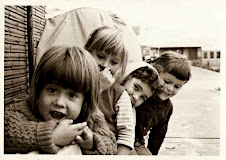





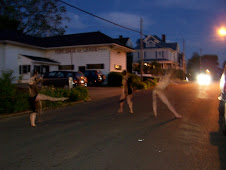
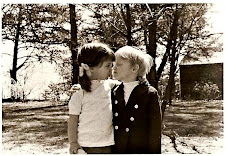


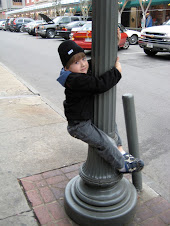
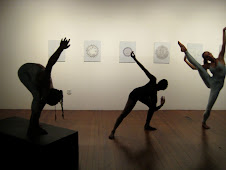






















No comments:
Post a Comment